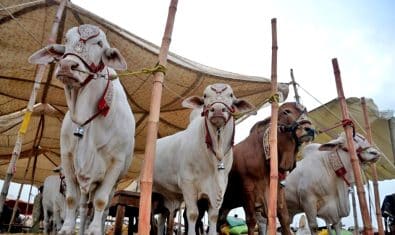Pakistan, Iran and Afghanistan are at the bottom of the World Economic Forum’s regional and global rankings for gender parity.
According to the WEF Global Gender Gap Report 2023, Pakistan ranks 142 out of 146 countries in the research pool with a 57.5 percent gender gap, which is the country’s highest since 2006.
In South Asia, Pakistan ranks 7th, ahead of Iran and Afghanistan while below India.
Pakistan: Key Statistics
Political Empowerment
Pakistan’s widest gender gap is in Political Empowerment (15.2 percent). It has had a female head of state for 4.7 years of the last 50 years, and one-tenth of the ministers as well as one-fifth of parliamentarians are women.
Economic Participation and Opportunity
Under this heading, Pakistan came in 143rd. The country ranks 140th in labor-force participation, 71st in wage equality for similar work, 137th in projected earned income, 139th in lawmakers, senior officials, and managers, and 132nd in professional and technical workers.
Countries that report relatively even access for men and women when it comes to Economic Participation and Opportunity include economies as varied as Liberia (89.5 percent), Jamaica (89.4 percent), Moldova (86.3 percent), and Norway (80 percent). At the bottom of the distribution, apart from Afghanistan, the countries that attained less than 40 percent parity include Pakistan (36.2 percent) and India (36.7 percent).
Cross-country disparities are more pronounced in terms of the gender gap in senior, managerial, and legislative roles, which globally stands at 42.9 percent. Ten countries assessed this year – six of which are located in Sub-Saharan Africa – report parity on this indicator. Afghanistan, Pakistan, and Algeria rank at the bottom, with less than 5 percent of professionals in senior positions being women.
Education
Ranking fifth out of eight regions, Southern Asia has closed 96 percent of the gender gap on the Educational Attainment subindex. India, Sri Lanka, and Maldives have the highest regional parity scores, while. Bangladesh, Nepal, Pakistan, and Afghanistan have achieved less than 95 percent parity.
On enrolment in tertiary education – barring Afghanistan, Bangladesh, and Pakistan – all countries are at full parity, though levels are low for both men and women.
Overall, Pakistan ranked 138th out of the total for the calendar year 2023. The literacy rate stands at 137, while secondary and tertiary education came up short at 132 and 104.
Health and Survival
The Health and Survival subindex displays the highest level of gender parity globally (at 96 percent) as well as the most clustered distribution of scores.
Though in most countries women tend to outlive men, the reverse is true in Southern Asia (Pakistan, 99.9 percent, and Afghanistan, 97.1 percent).
Pakistan ranks 1st in male births per female births (sex ratio at birth) and 140th for healthy life expectancy.
Pakistan, India, the Maldives, and Nepal have improved by varying degrees. All four countries have bettered their sex ratios at birth, with Pakistan and India making the most improvement. No country except Sri Lanka has attained full parity in healthy life expectancy.
The WEF Global Gender Gap Report 2023 identifies women’s economic engagement and reaching gender parity in industry and government as two critical factors for resolving broader gender gaps in households, society, and economies.
Earmarked as a study conducted every year, the report assesses the current level and evolution of gender parity in four key areas, namely economic participation and opportunity, educational attainment, health and survival, and political empowerment.


























Well if this isn’t shameful, then we are the most shameless nation on earth. Congratulations Bangladesh.